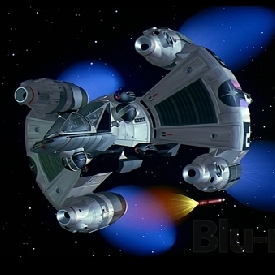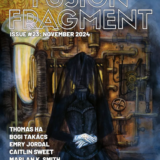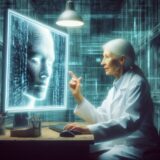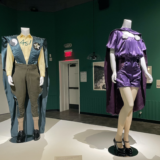“When I paint, I liberate monsters They are the manifestations of all the doubts, searches and groping for meaning and expression which all artists experience. One does not choose the content, one submits to it.”
~ Pierre Alechinsky
If you’re like me (and that’s very unlikely) you love monsters.
And if you’re an artist/illustrator as I am (again, very unlikely) you love drawing monsters.
Art is full of monsters, and not just Fantasy and Sci-Fi art. Monsters have been a staple of the art world since the art world began. Yes, even the cave paintings at Lascaux are full of monsters. Bulls, buffalo, mastodon, creatures that roamed the valleys and plains and eventually ended up on the cavemen’s dinner table. They are monstrous and wondrous creatures and the early artists sought to capture their unearthly beauty.
MONSTERS IN ANTIQUITY
 But sometimes the creatures that you see aren’t quite what an artists needs to express. The dark contains terrors and the imagination gives life to terrifying nightmares and those frightening images sometimes just have to come out. Artists throughout history have depicted bizarre creatures from the imagination for time immemorial, on caves and carved into pyramid walls, these monstrous creatures have pride of place alongside royalty and commoners alike.
But sometimes the creatures that you see aren’t quite what an artists needs to express. The dark contains terrors and the imagination gives life to terrifying nightmares and those frightening images sometimes just have to come out. Artists throughout history have depicted bizarre creatures from the imagination for time immemorial, on caves and carved into pyramid walls, these monstrous creatures have pride of place alongside royalty and commoners alike.
 With the development of paper, monsters continue to show up on maps and in the margins of illuminated manuscripts. “Here there be monsters,” and indeed there are – Manticores, the sphinx, griffins, sea monsters and giant apes – drawings, statuary, carvings, the monsters from our nightmares find their way into all of our expressions.
With the development of paper, monsters continue to show up on maps and in the margins of illuminated manuscripts. “Here there be monsters,” and indeed there are – Manticores, the sphinx, griffins, sea monsters and giant apes – drawings, statuary, carvings, the monsters from our nightmares find their way into all of our expressions.
The Garden of Earthly Delights by Hieronymus Bosch is a triptych oil painting on oak panel painted somewhere between 1490 and 1510. The piece depicts the traverse of humanity from the Garden of Eden, through life on this mortal plain and finally ending up in Hell. It is the final panel where the monsters are and the demons from hell gleefully torture the poor sinners who have ended up in the final judgment. Here Bosch depicts two ears wielding a knife, and the monstrous Tree Man in whose cavernous open torso the damned souls find refuge.
MODERN MONSTERS
Take a look at the classic “The nightmare” by Henry Fuseli. Painted in 1782 the canvas depicts the sleeper in the throes of a nightmare, the creatures of her imagination are made flesh and are intent on torment.
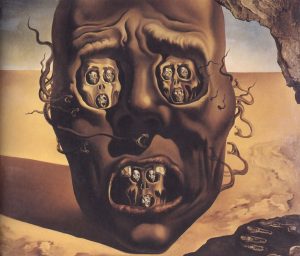 In the 20th century the horrors witnessed during the world wars and other conflicts, give fuel to artist’s nightmares. The Face of War, by Salvador Dalí was his reaction to the Spanish Civil War, Dalí’s hauntingly surreal monster head represents the master at his most profound. Dalí was impacted heavily by the war, and death was a sobering reality never far from his mind.
In the 20th century the horrors witnessed during the world wars and other conflicts, give fuel to artist’s nightmares. The Face of War, by Salvador Dalí was his reaction to the Spanish Civil War, Dalí’s hauntingly surreal monster head represents the master at his most profound. Dalí was impacted heavily by the war, and death was a sobering reality never far from his mind.
H. R. GIGER
 Three Studies for Figures at the Base of a Crucifixion painted in 1944 by Francis Bacon depicts a creature that seems to be made up of mouth and stomach and little else. This little monster provided the inspiration for Hans Ruedi Giger when he was designing creatures for the movie ALIEN in 1979.
Three Studies for Figures at the Base of a Crucifixion painted in 1944 by Francis Bacon depicts a creature that seems to be made up of mouth and stomach and little else. This little monster provided the inspiration for Hans Ruedi Giger when he was designing creatures for the movie ALIEN in 1979.
Giger, a Swiss surrealist, is probably one of the most well-known designer of monsters. His biomechanoid nightmares come from his subconscious and through his airbrush onto the canvas. These monster within, so to speak, that have to be given form. It’s a cathartic endeavour, to find those dark images within and bring them to life.
Giger’s work was utilized in many film productions and his work was sought after by recording artists and even interior decorators.
BASIL GOGOS
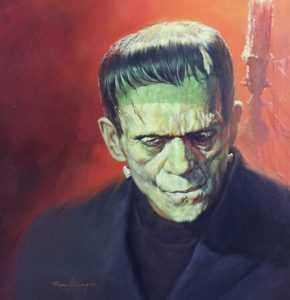 Basil Gogos was an American illustrator best known for his portraits of movie monsters which appeared on the covers of Famous Monsters of Filmland magazine in the 1960s and 1970s. His brilliantly detailed oil paintings brought the black and white Universal Monsters to life in garish and sometimes gruesome colours.
Basil Gogos was an American illustrator best known for his portraits of movie monsters which appeared on the covers of Famous Monsters of Filmland magazine in the 1960s and 1970s. His brilliantly detailed oil paintings brought the black and white Universal Monsters to life in garish and sometimes gruesome colours.
Gogos’ work appeared on trading cards, lithographs as well as on the covers of Monsterscene magazine. He has also painted CD covers for rock stars Rob Zombie, The Misfits and Electric Frankenstein.
BOB EGGLETON
 Bob Eggleton looks to Toho studios in Japan for much of his monster inspiration. An American science fiction, fantasy and horror artist, Eggleton is a nine-time Hugo Award–winner for Best Pro Artist in science fiction and fantasy, first winning in 1994. He won the Hugo Award for Best Related Book in 2001 for his art book Greetings from Earth and the Chesley Award for Artistic Achievement in 1999.
Bob Eggleton looks to Toho studios in Japan for much of his monster inspiration. An American science fiction, fantasy and horror artist, Eggleton is a nine-time Hugo Award–winner for Best Pro Artist in science fiction and fantasy, first winning in 1994. He won the Hugo Award for Best Related Book in 2001 for his art book Greetings from Earth and the Chesley Award for Artistic Achievement in 1999.
Like Gogos, Eggleton’s paintings of Godzilla and other Kaiju brings bright colours to these mostly monochromatic monsters. His depictions of Lovecraft’s Cthulhu, are some of the best in the field.
Monsters represent some of the darkest aspects of our psyches, but what what is it about monsters that appeal to kids?
SESAME STREET
 Jim Henson’s Muppets frequently take the forms of monsters and children love them. What are we to make of that? Who doesn’t love Sesame Street‘s Cookie Monster? Where is the dark aspect of the psyche in this lovable blue furred puppet?
Jim Henson’s Muppets frequently take the forms of monsters and children love them. What are we to make of that? Who doesn’t love Sesame Street‘s Cookie Monster? Where is the dark aspect of the psyche in this lovable blue furred puppet?
Well, it’s kind of “Monster Lite” really. What are some of the problems that kids have in dealing with the world? Impulse control is one. That’s something that kids have to learn. How many of us as children ate too many delicious cookies and ended up with a tummy ache? The Cookie Monster is the manifestation of that impulse. It presents that idea to kids in a fun and non-threatening way, but I think most kids get the point. Craving something to the point of manic mastication is not a good way to live your life. (And I should know. I have suffered many a sour stomach because I didn’t know when to stop with the cookies… even into adulthood, I reluctantly admit.)
The point is that the monsters we create are our way of dealing with the dark feelings, the fear, the doubt, the uncertainty. Creating a monster manifests that from our subconscious and, in doing so, purges it from within, leaving us feeling lighter and less burdened.
But we must be careful, when manifesting monsters, that we don’t point to others as examples of these nightmare creatures. The disenfranchised, those of different ethnicities, the differently abled, the differently gendered… if we point to these groups and say “Here there be monsters”… well… then you know where the monster really lies.
It lies within.






